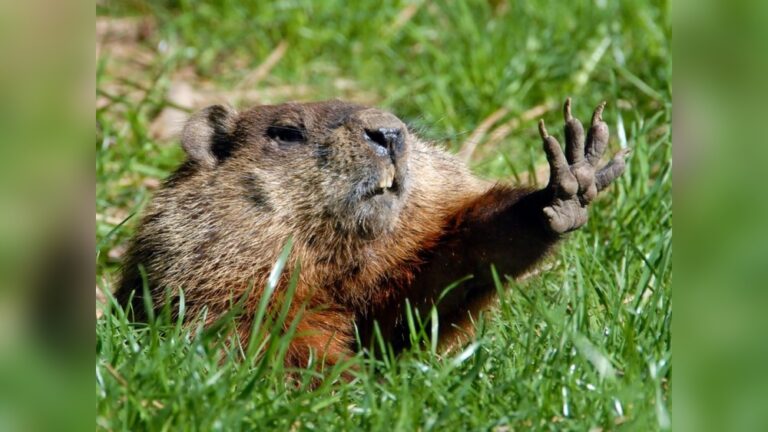Are Moles Rodents The Myth And The Truth: Unveiling Facts
Have you ever wondered if moles are rodents? It’s a question that confuses many people.
You might have heard different stories or seen conflicting information online. Understanding the truth about moles can help you better manage your garden or yard. You will discover the facts behind the myth and learn exactly what moles really are.
Keep reading, because what you think you know might surprise you.

Credit: groundhognh.com
Moles Vs Rodents
Moles and rodents often get confused because both live underground. Many think moles are rodents, but this is not true. Understanding their differences helps clear this common myth.
Moles belong to a different group than rodents. Their body, habits, and biology all show clear differences. Let’s explore these key points.
Biological Classification
Moles belong to the order Eulipotyphla. This group includes animals like shrews and hedgehogs. Rodents belong to the order Rodentia. This group has animals like mice, rats, and squirrels. The two groups split millions of years ago in evolution. So, moles are not rodents by science.
Physical Differences
Moles have strong, broad front paws for digging. Their paws look like small shovels. Rodents have smaller paws with claws for climbing and gnawing. Moles have cylindrical bodies covered with dense fur. Rodents often have longer tails and bigger eyes. Moles’ eyes are tiny and almost hidden. This suits their life underground where sight is less important.
Behavioral Traits
Moles spend most of their time underground in tunnels. They eat insects, worms, and grubs. Rodents are more versatile. They live both underground and above ground. Rodents eat seeds, fruits, and sometimes small animals. Moles are solitary animals. Rodents often live in groups or colonies. Their behavior reflects their different lifestyles and needs.
Common Misconceptions
Many people think moles are rodents, but this is not true. Misunderstandings about moles are common. These small animals have unique traits that differ from rodents. Clearing up these myths helps us understand moles better.
Why Moles Are Mistaken For Rodents
Moles live underground like some rodents. Their size and shape also look similar to rats or mice. People often see mole tunnels and think rodents made them. Both moles and rodents dig, but their digging styles differ. Moles have strong front paws for digging wide tunnels.
Rodents usually gnaw on plants and wood. Moles mostly eat insects and worms. This diet difference shows they are not rodents. Moles belong to the family Talpidae, which is different from rodents.
Impact Of Mislabeling
Calling moles rodents can lead to wrong pest control methods. Rodent traps or poisons might harm moles or other animals. Mislabeling also spreads confusion about mole behavior and habits. People may try to remove moles using incorrect techniques. Understanding moles helps protect them and our gardens better.
Educating about moles reduces fear and wrong actions. It also helps gardeners find the right ways to manage mole activity. Clear facts promote respect for wildlife and balance in nature.
Mole Anatomy And Adaptations
Moles have special bodies made for life underground. Their shape and skills help them dig and live in soil. Understanding their anatomy shows why moles are not rodents. They belong to a different animal group called Talpidae.
Their body parts work together for digging and sensing. These features make moles unique and perfect for their hidden world. Their adaptations protect them and help them find food under the ground.
Unique Features
Moles have short, strong bodies with soft fur. Their fur lies flat and helps them move smoothly in tunnels. They have tiny eyes that see little but can sense light.
Their front paws are broad and shaped like shovels. Long claws help them dig fast and deep. Their noses have many nerves to detect insects and worms in the soil.
Burrowing Techniques
Moles use their strong paws to push soil aside. They dig sideways to make tunnels and nests. Their bodies are slim and flexible to slip through tight spaces.
They move soil behind or to the side while they dig. This keeps their tunnels clear and easy to travel. Moles can dig up to 18 feet in one night.
Ecological Role Of Moles
Moles play an important role in nature. They are not just small animals digging tunnels. Their activities help keep the soil healthy and control pests. Understanding their ecological role shows why they matter in the environment.
Soil Aeration
Moles dig tunnels deep underground. These tunnels let air reach the soil. Air in the soil helps plants grow strong roots. Good soil aeration improves water movement and nutrient flow. This makes the soil richer and healthier. Moles act like natural gardeners, improving soil without any effort.
Pest Control Benefits
Moles eat many insects and larvae. They help reduce harmful pests that damage plants. By eating grubs and beetles, moles protect gardens and crops. They keep the insect population balanced. This natural pest control reduces the need for chemicals. Moles help maintain a healthy ecosystem quietly below ground.
Human Interaction With Moles
Moles often surprise people because they live close to human homes. These small animals dig tunnels underground. They rarely come above ground. People notice moles mostly by the holes and mounds they leave. This interaction with humans creates mixed feelings. Some find moles a sign of a healthy garden. Others see them as pests that harm their lawn. Understanding how moles affect human spaces helps manage them better.
Garden And Lawn Impact
Moles dig tunnels that can disturb roots of plants. This digging causes uneven ground and small hills. Gardens may look messy and damaged. Plants may not grow well if roots are harmed. Lawns become bumpy and harder to mow. Moles do not eat plants, but their digging can kill them. Their tunnels also help air reach soil. This can sometimes improve soil health. Still, many homeowners worry about the damage moles cause.
Effective Management Strategies
Stopping moles needs careful planning. Using traps is one common way to reduce mole numbers. Traps must be placed inside active tunnels. Repellents made from natural ingredients can help. Keeping the garden dry and removing food sources like insects reduces mole visits. Planting mole-repellent plants is another option. Avoid using harmful chemicals that can hurt pets or soil. Regular lawn care keeps the area less attractive to moles. Patience and consistent effort work best to manage moles.

Credit: www.victorpest.com

Credit: insightpestnorthwest.com
How Smart Pets Lover Can Help You with Are Moles Rodents The Myth And The Truth
Learning from Moles: Practical Insights Beyond the Myth
Understanding the truth about moles—especially clearing up common misconceptions about whether moles are rodents—opens up fascinating opportunities to learn from their unique adaptations. By exploring mole anatomy and their ecological role, pet parents and animal lovers can appreciate how these creatures contribute to soil health and pest control, which indirectly benefits our gardens and outdoor spaces.
For those curious about how moles differ from rodents, diving deeper into their biology provides practical knowledge that can guide humane coexistence strategies. Observing their behavior helps us foster respect for wildlife while managing any unwanted interactions thoughtfully and responsibly.
- Explore soil-friendly gardening techniques inspired by mole activity.
- Learn to identify mole tunnels to distinguish them from other burrowing animals.
- Understand how moles fit into the broader ecosystem, enhancing biodiversity.
At Smart Pets Lover, we’re all about helping you feel confident and connected with the animals around you—whether furry or not. For more insightful discussions or questions about wildlife and pet care, feel free to reach out. After all, every creature’s story enriches our shared world.
Frequently Asked Questions
Are Moles Classified As Rodents?
No, moles are not rodents. They belong to the family Talpidae, distinct from rodents. Moles are insectivores, primarily eating insects and worms, unlike rodents that mostly feed on plants and seeds.
How Do Moles Differ From Rodents?
Moles have specialized digging limbs and a diet of insects. Rodents have continuously growing teeth and mainly consume plant material. This biological difference places moles in a separate order from rodents.
Why Are Moles Often Mistaken For Rodents?
Moles resemble small rodents due to their size and burrowing habits. However, their diet and anatomical features differ significantly, causing confusion. Understanding these differences clarifies that moles are unique insectivores, not rodents.
Do Moles Cause Damage Like Rodents?
Moles create tunnels that can damage lawns and gardens. Unlike rodents, they do not chew wires or contaminate food. Their damage is mostly related to soil disruption rather than structural harm.
Conclusion
Moles are often mistaken for rodents, but they are not. They belong to a different animal group called insectivores. Moles have unique features that set them apart from rodents. Understanding this helps clear up common myths. Knowing the truth can improve how you deal with moles in your yard.
Moles play a role in nature, helping control insect populations. So, next time you see a mole, remember it is not a rodent. This simple fact changes how we view these small creatures.






